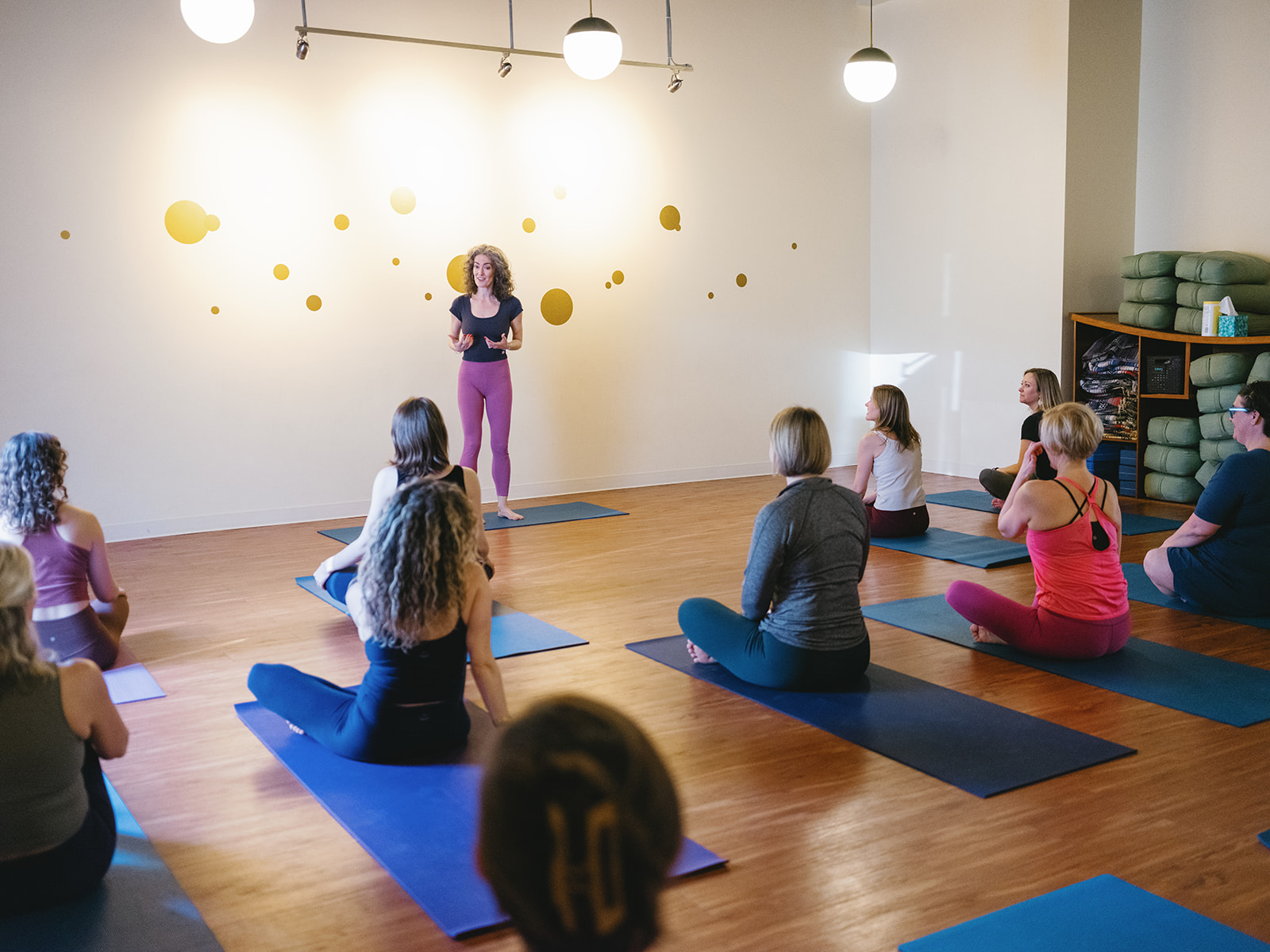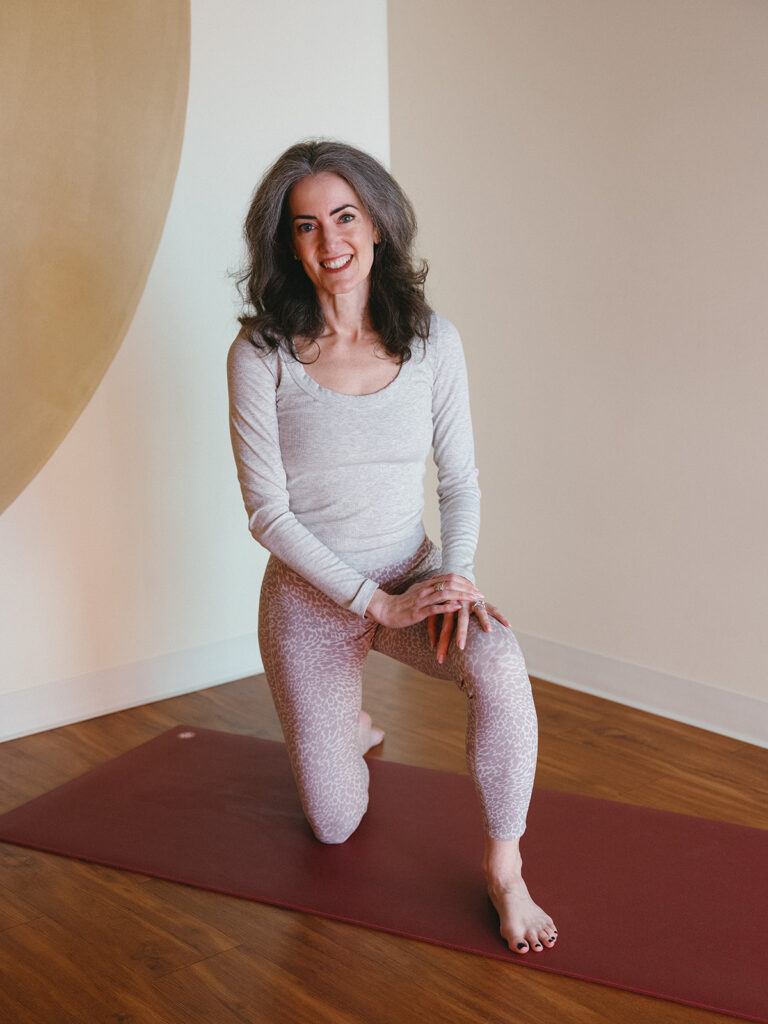A sad truth: yoga teachers can’t always help everyone in the room.
Most yoga classes that are open to the public are, by default if not by design, all-levels classes. You’ll find a wide range of ages, experiences, and abilities in the room.
And these are often the classes most beginner teachers lead.
You can’t always teach everyone in the room. You can’t always help everyone in the room at the same time. But you can help everyone over time.
How to Teach All-Levels Yoga Classes
In the group-class setting, I suggest you aim to teach the middle of the curve, the 80 percent, and sell private lessons to the 10 on either end.
When you teach your next all-levels class and find some students need extra care and others might benefit from being challenged, remember not to focus on these outliers to the detriment of the majority in class.
Do what you can to hit the middle of the bell curve.
How do you hit the middle of the bell curve? Well, as the Bhagavad Gita suggests, you just do your best according to your duty as a yoga teacher and try not to get too attached to the outcome.
How to Include (Almost) Everyone in Your Yoga Class
But here are some tips to help you do your best.
Less up and down. Start low to the ground, take your time coming up to standing, then your time coming back down to the ground. Lots of up and down is tough on people with less experience, folks with blood-pressure issues, and just anyone who is tired.
Or start standing—this is especially useful in both early-morning classes, where lying down might lead to falling back asleep, and in after-work classes, when students have been sitting at their desks and in their cars all day. Then slowly make your way down to the mat.
Less time with hands on the floor. While as a teacher with yoga experience, you might love starting in and staying in tabletop for cat/cow, twists, and other moves, your students may not yet have the conditioning in their wrists, elbows, shoulders, and upper-body musculature to make this any fun. If you can think back to your early days as a yoga practitioner, you might remember dealing with wrist pain as your body acclimated to the load of all the hands-to-mat weight-bearing movements.
More single-leg standing balance poses. Don’t just throw in one perfunctory tree pose before reverting to a sun-salutation default. Everyone who walks in to a yoga class will need more balance poses. (And if they came in using a wheelchair, they also benefit from the upper-body movements you see in these balance poses.) Single-leg balance poses build strength in the standing leg and the core while they may simultaneously stretch the raised leg in all kinds of ways. (Think of the outer-hip work and inner-thigh stretch in your raised leg in tree, or in standing figure 4.) These poses allow everyone in the room to work at their own appropriate level of challenge, which makes them especially useful in all-levels classes
Up the ante in fun ways that get students laughing. Most of us take our yoga practice way too seriously—especially those single-leg standing balance poses. To lighten the mood, keep ratcheting up the challenge until everyone finds their wobbly edge or has to fall out of the pose laughing. It could go like this:
- Stand on a softer surface like a blanket, or even a bolster
- Stand higher up, like on a block or a stair
- Raise your gaze to the ceiling
- Close your eyes
- Close your eyes and turn your head side to side
- Lift your standing-leg heel off the floor
- Lift your entire standing-leg foot off the floor
OK, that last one was a trick, but the point is that there will always be a next level to every pose. So instead of striving to win, focus on being where you are, at your own appropriate edge.
Hopefully these tips gave you some ideas and confidence to serve the majority of students the next time you are planning to teach your all-levels yoga class. And I hope this helps you feel more confident, capable, and relaxed in front or your group classes.
Remember: this 80 percent, this middle of the bell curve, is where you should focus in your group classes.
How to Help Everyone in the Room—Just Not at the Same Time
Let’s talk about the 10 percent on either end: they might benefit from private lessons.
For the students who are newer to yoga or who would benefit from troubleshooting the best expression of poses, a private lesson can go a long way toward getting them comfortable joining the 80 percent of students you can help in a group class. In a private lesson, you can offer support so that students can make smart choices the next time they are in a group class.
Maybe you see students who might enjoy doing a practice a few steps beyond what you would mention to the 80 percent you’re serving in class. In a private lesson, they can work toward arm balances or other ways to capitalize on their strengths, without letting the tail of more “advanced” students wag the dog of the majority who need a middle-of-the-road practice.


